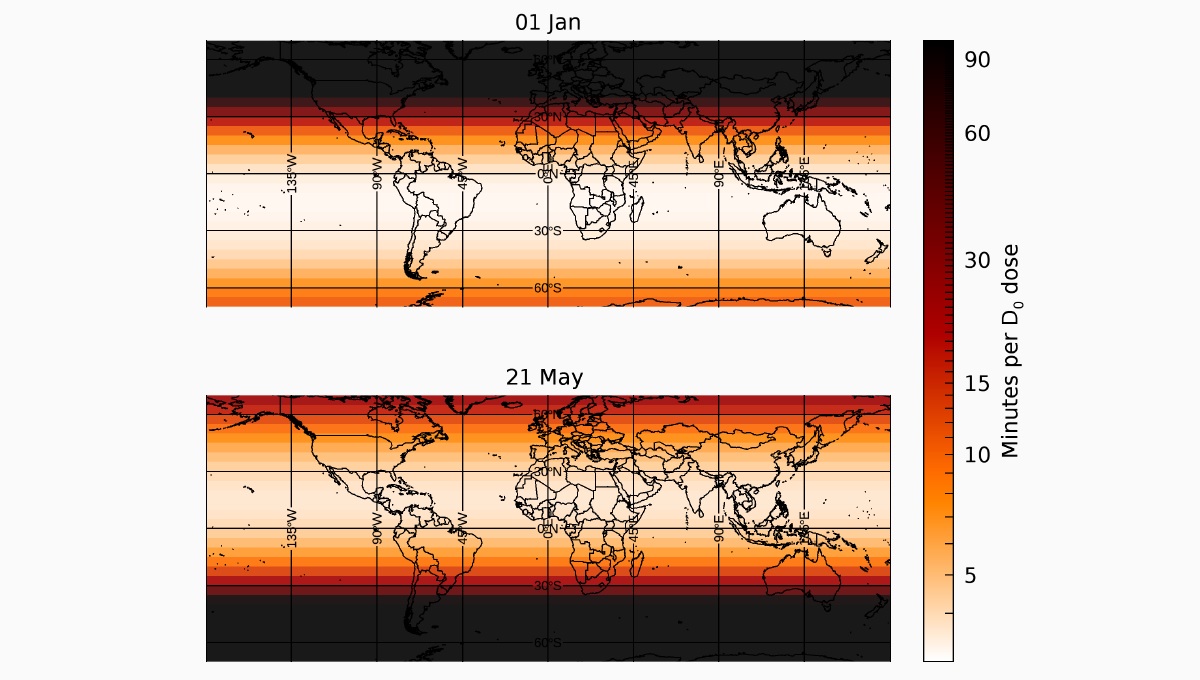Modulation of COVID19 Epidemiology by UV-B and -A Photons from the Sun
Publication date: 08/06/2020 – E&P Code: repo.epiprev.it/1746
Authors: Fabrizio Nicastro1, Giorgia Sironi2, Elio Antonello2, Andrea Bianco2, Mara Biasin3, John R. Brucato4, Ilaria Ermolli1, Giovanni Pareschi2, Marta Salvati5, Paolo Tozzi4, Daria Trabattoni3, Mario Clerici6
Abstract: It is well known that 200-290 nm ultraviolet photons (hereinafter UV-C radiation) photo-chemically interacts with DNA and RNA and are endowed with germicidal properties that are also effective on viruses (1-8). Fortunately, Solar UV-C photons of this wavelength are filtered out by the Ozone layer of the upper Atmosphere, at around 35 km (9). Softer UV photons from the Sun with wavelengths in the range 290-320 nm (UV-B) and 320-400 nm (UV-A), however, do reach the Earth’s surface. The effect of these photons on Single- and Double-Stranded RNA/DNA viruses (9-12) and the possible role they play on the seasonality of epidemics (13), are nevertheless little studied and highly debated in alternative or complementarity to other environmental causes (14-20). Notably though, the effects of both direct and indirect radiation from the Sun needs to be considered in order to completely explain the effects of UV radiations in life processes (with e.g. the UV virucidal effect enhanced in combination to the concomitant process of water droplets depletion because of Solar heat). Herein we present a number of concurring circumstantial evidence suggesting that the evolution and strength of the recent Severe Acute Respiratory Syndrome (SARS-Cov-2) pandemics (21, 22), might be have been modulated by the intensity of UV-B and UV-A Solar radiation hitting different regions of Earth during the diffusion of the outbreak between January and May 2020. Out findings, if confirmed by more in depth data analysis and modeling of the epidemics, which includes Solar modulation, could help in designing the social behaviors to be adopted depending on season and environmental conditions.
Cite as: Fabrizio Nicastro, Giorgia Sironi, Elio Antonello et. al. (2020). Modulation of COVID19 Epidemiology by UV-B and -A Photons from the Sun. E&P Repository https://repo.epiprev.it/1746
Topic: COVID-19
Key words: COVID-19, disinfezione con luce UV, luce solare, pandemia, SARS-CoV-2, UV,
AVVERTENZA. GLI ARTICOLI PRESENTI NEL REPOSITORY NON SONO SOTTOPOSTI A PEER REVIEW.
Modulation of COVID19 Epidemiology by UV-B and -A Photons from the Sun
Info
Affiliations:
1 Italian National Institute for Astrophysics (INAF) – Rome Astronomical Observatory, Rome, Italy
2 Italian National Institute for Astrophysics (INAF) – Brera Astronomical Observatory, Milano/Merate, Italy
3 Department of Biomedical and Clinical Sciences L. Sacco, University of Milano, Milano, Italy
4 Italian National Institute for Astrophysics (INAF) – Arcetri Astrophysical Observatory, Firenze, Italy 5 Regional Agency for Environmental Protection of Lombardia (ARPA Lombardia), Milano, Italy
5 Department of Pathophysiology and Transplantation, University of Milano and Don C. Gnocchi Foundation, IRCCS, Milano, Italy
Authors’ contributions: Same contribution for all authors.
Competing interests: No conflict of interest.
Funding disclosure: This study has been conducted only with institutional and internal support by INAF and University of Milano.
Ethics committee approval: The study was based on publicly available aggregate data. No Ethics committee approval was necessary.
Copyright: Il detentore del copyright è l’autore/finanziatore, che ha concesso a “E&P Repository” una licenza per rendere pubblico questo preprint. The copyright holder for this preprint is the author/funder, who has granted E&P Repository a license to display the preprint in perpetuity.
Terms of distribution: CC BY

Figure 1. Exposing the World to UV Light. World maps with superimposed a lethal-time intensity-gradient image, as derived from Temis UV-B/A data. Data refers to 1 January 2020 (top panel) and 1 May 2020 (bottom panel). On 1 January subtropical regions (latitude angle α<20 degrees) receive UV doses a factor of 5 higher than temperate regions in the north hemisphere (α≈30-50 degrees), while the effect greatly mitigates in May and inverts in July.
References & Citations
Google Scholar

